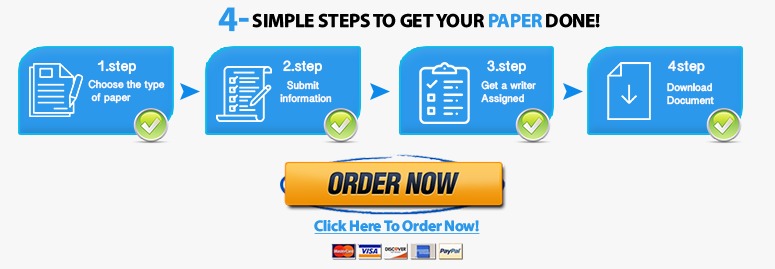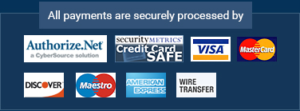For example, you are the manager of a hotel in Mexico and have been asked by the CEO to put together an analysis to consider an expansion by 50% (eg., 100 rooms and swimming pool) and/ or to reinvent the hotel’s theme to offer guests an “all inclusive” experience (ie., for a one time fee, all drinks and meals are included).
UCW – Fall Term
Class End of Term Group Project – Managerial Accounting 621.
Topic
Pick a company, business or any venture of your choosing, and put together a business case for the expansion, divestiture or re-imagination of the business. The topic is intentionally broad to allow students a multitude of opportunities to showcase one’s originality, creativity and unique skill sets/ experiences.
For example, you are the manager of a hotel in Mexico and have been asked by the CEO to put together an analysis to consider an expansion by 50% (eg., 100 rooms and swimming pool) and/ or to reinvent the hotel’s theme to offer guests an “all inclusive” experience (ie., for a one time fee, all drinks and meals are included). In this scenario, your group would need to put together a financial summary of the hotel (liquidity, profitability, etc.) and identify areas that it could enable it to execute on its strategy. Is it realistic to expect the hotel to be able to raise capital for the expansion? How many hotel guests would the hotel need to have in order to reach a defined target and how it propose to achieve these goals? How long would it take to recoup its investment and would the investment make financial sense (ie., Capital Budgeting Chapter – Payback, IRR, NPV, etc. to be discussed next week).
Criteria Guidelines:
- Project Report
- Ideally 15-20 pages in length (+ appendix)
- Include an executive summary, assumptions, pro-forma financial statement (excel spreadsheet), analysis (re: alternatives considered), conclusion.
- The appendix may include an actual set of financial statements from industry
- The intent of the report is to include the concepts introduced in the classes. You may not need or be able to incorporate all of the major concepts, but a basic understanding of the majority of major topics should be demonstrated. (re: ratios analysis, CVP analysis, Capital Budgeting (eg., NPV)).
- You are also encouraged to bring your own unique experiences and skills to the project as well as concepts from other courses within the UCW MBA curriculum.
- Marking scheme
- 75% report; 25% oral presentation
- Represents 30% of the overall grade
- Based on logic/ realism, originality and ability to incorporate class concepts into the report
- Marks will also be awarded for correct formatting, introduction of graphs, and focus of the deliverables.
- Some examples: a) Debt vs. equity for an expansion b) DuPont breakdown c) lease or operate decision d) advertising campaign and potential impacts e) sale of a division and use of proceeds (ie., pay down debt vs. new acquisition) f) capital acquisition vs. lower labour costs
- Group may also desire to include additional financial concepts over and above the concepts learned in ACCT 621, including those acquired from other classes at UCW.
Assessment Rubrics
| Written Communication Assessment: Guideline
| |||
| 1 Did not meet expectations | 2 Met expectations | 3 Exceeded expectations | |
| Writing Conventions (grammar, word use, punctuation, mechanics) | Frequent grammatical errors and misspellings inhibit readability, Informal language, abbreviations and slang are used | Few grammatical errors and misspellings (e.g. three or fewer per page) Correct verb tense used Paragraphs flow from one to another Active voice pervasive | Free of grammatical errors and misspellings Effective verb tense used Uses phrases and construction that delight as well as inform the reader Primarily active voice |
| Overall Effectiveness of Piece (professional appearance, expression and format) | Not formatted to Specifications, Lacking professional appearance | Formatting is generally correct, acceptable professional appearance. | Assigned format followed explicitly: Exceptional professional appearance |
Critical Thinking and Written Analyses Rubric – Scale Description/Guideline
| Levels | |||
| Criteria | 1 Did Not Meet Expectations | 2 Met Expectations | 3 Exceeded Expectations |
| Clarity | Writing is not clear. It is difficult to understand points being made. The writing lacks transitions, and few examples and/or illustrations are provided to support explanation or recommendations. | Writing is generally well organized and understood. Transitions are used to facilitate clarity. Some examples and/illustrations are used to support explanation or recommendations. | Writing is succinct, precise, effectively organized and without ambiguity. Transitions, explanation and elaboration are extensive to elucidate points. Detailed illustrations and/or examples are used to support explanation or recommendations. |
| Relevance | Critical issues/questions are omitted or ignored in the writing. | Most of the critical issues/questions are addressed in the writing. | All critical issues/questions are addressed completely in the writing |
| Depth of Discussion | Ignores bias; Omits arguments Misrepresents issues; Excludes data; Includes but does not detect inconsistencies of information; Ideas contain unnecessary gaps, repetition or extraneous details; Sees no arguments and overlooks differences | Detects bias; Recognizes arguments; Categorizes content; Paraphrases data; Sufficient detail to support conclusions and/or recommendations | Analysis includes insightful questions; Refutes bias; Discusses issues thoroughly; Critiques content; Values Information ; Examines inconsistances; Offers extensive detail to support conclusions and recommendations; Suggests solutions or implementation |
| Breadth of Discussion | Omits arguments or perspectives; Misses major content areas/concepts; Presents few options | Covers the breadth of the topic without being superfluous | Considers multiple perspectives; Thoroughly delves into the issues/questions; Thoroughly discusses facts relevant to the issues |
| Integration of all Elements of Reasoning | Fails to draw conclusions or conclusions rely on author’s authority rather than strength of presentation; Draws faulty conclusions; Shows intellectual dishonesty | Formulates clear conclusions with adequate support | Assimilates and critically reviews information, uses reasonable judgment, and provides balanced, well justified conclusions |
| Internal Consistency | There is little integration across the sections of the paper. Several inconsistencies or contradictions exist. Few of the issues, recommendation and explanations make sense and are well integrated. | Sections of the paper are generally well linked/connected. Only minor contradictions exist. Most of the issues, recommendations and explanations make sense and are well integrated. | All sections of the paper are linked. There are no contradictions in the writing. All issues, recommendations and explanations make sense and are well integrated |
Values: Level 1: 10%, Level 2: 50% and Level 3: 100%
Ratio Summary
Current Ratio = Current Assets/ Current Liabilities
Quick Ratio = (Current Assets – Inventory – Prepaid Expenses)/ Current Liabilities
Credit Card Receivables Turnover = Credit Card Revenue/ Average Credit Card Receivables
Average Credit Cards Collection Period = Days in the Period/ Credit Card Turnover
A/R Turnover = A/R Credit Revenue/ Average A/R
A/R Collection Period = Days in the Period/ A/R Turnover
Net Return on Assets = Net Income After Tax/ Total Average Assets
Return on Equity = Net Income After Tax/ Average Shareholders’ Equity
Inventory Turnover Ratio = COS/ Average Inventory for the Period
Inventory Holding Period = Operating Days in the Period/ Inventory Turnover Ratio
Debt/ Equity = Long-Term Debt/ Average Shareholders’ Equity
Interest Coverage Ratio = Earnings Before Interest and Taxes/ Interest Expense


